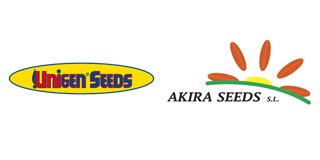
UNIGEN SEEDS SPAIN
Phenolic extracts from wild edible plants represent an alternative to control postharvest decay in cherries
Postharvest treatments with extracts from two wild edible plants (Orobanche crenata and Sanguisorba minor), water solutions of two inorganic salts (calcium chloride, CaCl2, and sodium bicarbonate, NaHCO3), and their combination (i.e., extracts with added CaCl2 or NaHCO3), were assayed to control sweet cherry postharvest diseases. Three extract concentrations for each plant were assayed, corresponding to 0.170, 0.340, and 0.510 g dry matter/mL
28 September, 2016
Postharvest treatments with extracts from two wild edible plants (Orobanche crenata and Sanguisorba minor), water solutions of two inorganic salts (calcium chloride, CaCl2, and sodium bicarbonate, NaHCO3), and their combination (i.e., extracts with added CaCl2 or NaHCO3), were assayed to control sweet cherry postharvest diseases. Three extract concentrations for each plant were assayed, corresponding to 0.170, 0.340, and 0.510 g dry matter/mL and to 0.125, 0.250, and 0.500 g dry matter/mL for S. minor and O. crenata, respectively. At the lowest and the highest concentrations tested, S. minor extract was able to inhibit rot development in stored fruit by 79 and 89%, respectively, with an efficacy comparable to that of CaCl2 and NaHCO3; for O. crenata extract such inhibition ranged between 64 and 76%, respectively. A dose effect was observed only for O. crenata. Moreover, the level of control was not improved by the combined application of plant extracts and salts. HPLC analysis of O. crenata extract showed verbascoside as the main phenolic compound, being about 95% of total phenolics; S. minor phenolic pattern appeared to be more complex, due to the presence of caffeic acid derivatives, quercetin-3-glucoside, kaempferol-3-glucoside and other quercetin, kaempferol, and luteolin derivatives, as well as many other unidentified compounds. Residues of phenolics resulting from plant extracts in treated sweet cherries after storage were below the analytical limit of detection. The study demonstrated that S. minor and O. crenata extracts might represent an alternative organic mean for controlling sweet cherry postharvest decay.SourcesPhenolic extracts from wild edible plants to control postharvest diseases of sweet cherry fruitMaria Antonia Gatto (a), Lucrezia Sergio (a), Antonio Ippolito (b), Donato Di Venere (a)a CNR?Institute of Sciences of Food Production (ISPA), Via Amendola 122/O, 70126 Bari, Italyb Department of Soil, Plant and Food Sciences (DiSSPA)?Universit? degli Studi di Bari ?Aldo Moro?, Via Amendola 165/A, 70126 Bari, ItalyPostharvest Biology and Technology, Volume 120, October 2016, Pages 180?187 Pictures1 - Orobanche crenata by granadanatural.com2 - Sanguisorba minor by wikipedia.org









